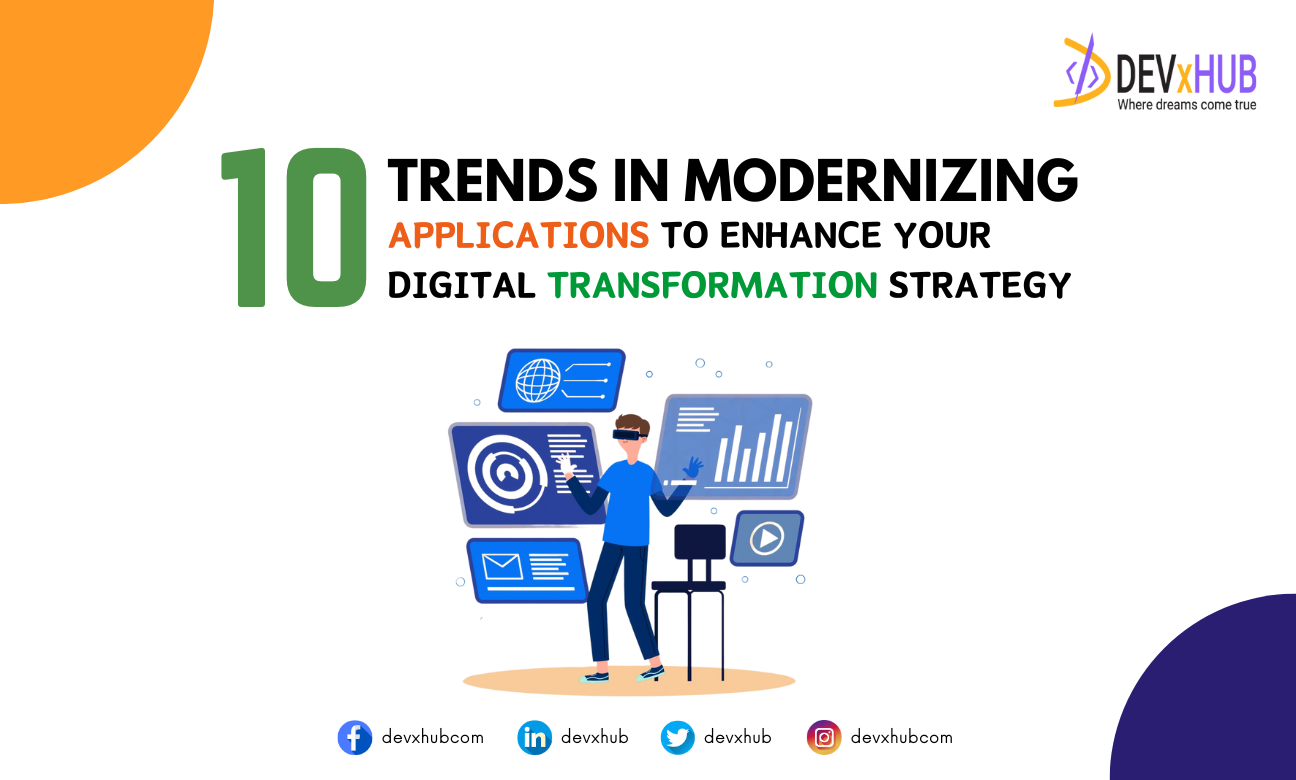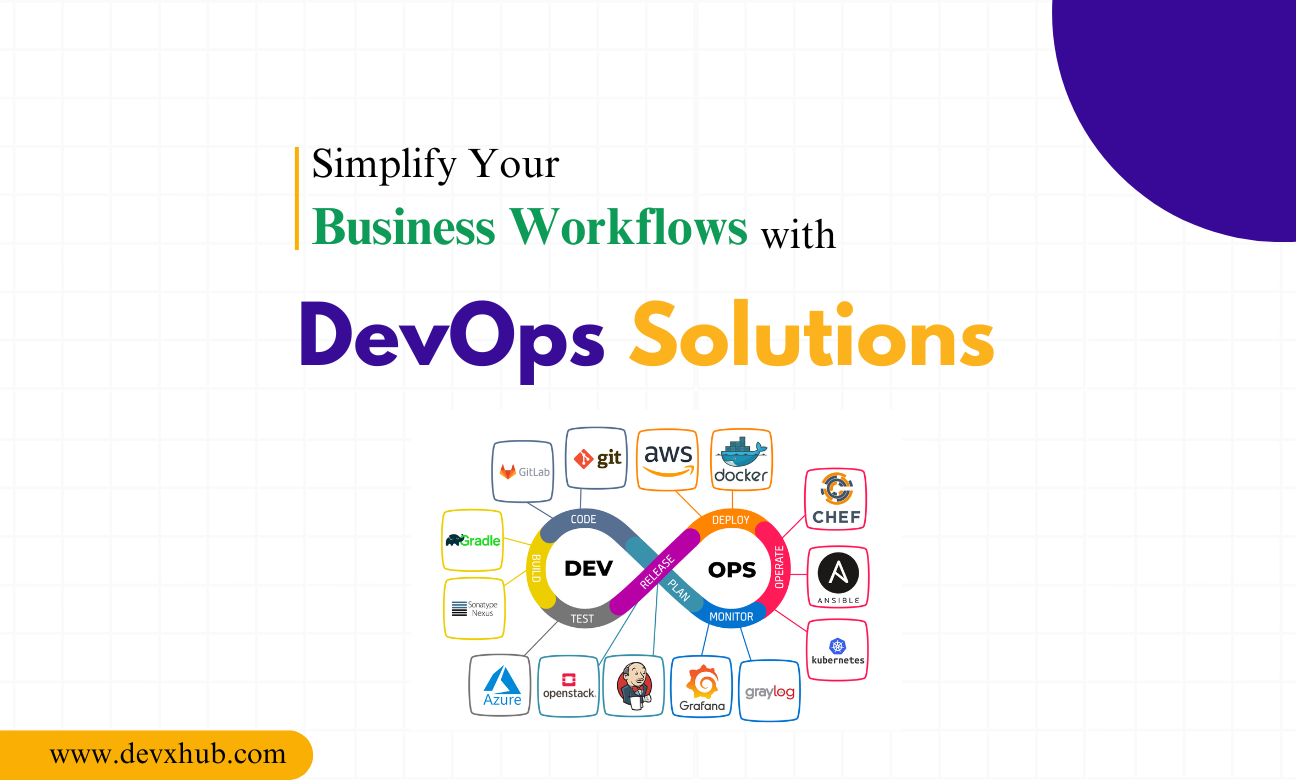The necessity for application modernization continues to escalate in tandem with the rapid pace of digital transformation and the evolving preferences of consumers. In fact, a striking 83% of executives recognize the imperative nature of updating apps and data within their business strategies. However, the question arises: where does one begin the journey of app modernization?
The starting point lies in grasping and aligning with the latest trends in app modernization. This proactive approach not only amplifies a business’s responsiveness but also enhances operational efficiency, enabling a swifter adjustment to market dynamics.
Let’s delve into the prevailing trends in application modernization that are reshaping the digital landscape.
Significance of Application Modernization for Businesses
Application modernization stands as a cornerstone for businesses aiming to keep their software ecosystem pertinent and proficient in today’s dynamic technological milieu. It encompasses the ongoing process of updating and optimizing applications to achieve various objectives:
- Agility and Market Adaptation: Ensuring swift adaptability to changing market dynamics.
- Efficiency Enhancement and Cost Reduction: Streamlining operations to drive cost efficiencies.
- Scalability: Facilitating seamless expansion of systems to accommodate growth.
- Enhanced User Experience: Elevating satisfaction levels among users through optimized applications.
- Integration with Emerging Technologies: Seamlessly incorporating new technologies into existing systems.
- Compliance and Security: Adhering to evolving security protocols and regulatory standards.
- Future Preparedness and Competitiveness: Positioning the business to embrace forthcoming innovations and maintain competitiveness.
The ramifications of neglecting app updates can severely impede business prospects. Firstly, it erodes competitiveness, leaving businesses trailing behind industry peers unable to meet evolving customer demands. Additionally, the accumulation of technical debt—resulting from shortcuts and compromises made during development—renders future updates arduous and costly, stifling innovation and adaptability.
Moreover, with the escalating cyber threats, outdated systems present easy targets, underscoring the urgency of app modernization. Little wonder then that recent findings from a vFunction report underscored app modernization as a top priority for CIOs.
In essence, staying abreast of app modernization trends isn’t just a matter of staying current; it’s an imperative for businesses aiming to thrive in today’s digitally driven landscape.
Navigating the Timing and Strategy for Legacy Systems Modernization
Although it might not immediately appear evident, organizations often have valid justifications for persisting with older software systems. These legacy systems frequently underpin crucial functions that are challenging to replicate, and the perceived risks and expenses associated with migration can be daunting.
However, there comes a point where the imperative to modernize becomes undeniable. Outdated technology can impede agility, scalability, and innovation, placing the organization at a competitive disadvantage. Furthermore, legacy systems often struggle to meet contemporary security standards, rendering them vulnerable to cyber threats.
Determining the optimal timing for modernization entails scrutinizing escalating maintenance costs, deteriorating performance metrics, and an incapacity to align with evolving business requirements. Once the necessity for legacy systems modernization is apparent, several actionable steps can be taken:
- Develop a modernization blueprint that prioritizes minimal disruption to ongoing operations.
- Ensure clear communication across the organization regarding the objectives and benefits of the modernization initiative.
- Harness cutting-edge tools such as AI, DevOps practices, and cloud infrastructure to streamline processes and efficiently upgrade antiquated systems.
- Initiate the modernization process with incremental advancements to garner momentum and foster organizational support.
Are you prepared to embark on the journey of application modernization? Reach out to us today to initiate the transformation!
Exploring 10 Pivotal Trends in Application Modernization
Dive into the forefront of application modernization and migration trends, where businesses are honing their competitive edge, enhancing user experiences, and fostering innovation.
Cloud-Native Development
- Transitioning old applications to the cloud offers immediate benefits like flexibility and pay-as-you-go pricing. Yet, the true game-changer lies in adopting a fully cloud-native approach. By constructing and operating apps with cloud technologies such as containers, microservices, and cloud-based services, businesses achieve scalability that seamlessly adapts to evolving needs. Forecasts indicate that nearly all new digital projects (95%) will rely on cloud-native platforms by 2028, underscoring the significance of this trend.
Hybrid Cloud Technology
- The fusion of public and private clouds into hybrid cloud computing empowers organizations to tailor cloud resources to their precise requirements while retaining full data control. Recognized as pivotal to successful digital transformation, a robust hybrid cloud strategy is endorsed by 70% of IT leaders.
Low-Code No-Code Development (LCNC)
- The surge of low-code, no-code platforms democratizes software development, enabling non-technical users to construct applications via intuitive drag-and-drop interfaces. This democratization accelerates app development and slashes costs, positioning LCNC as a compelling modernization avenue. Projections estimate the global LCNC market to reach $187 billion by 2030, underlining its centrality to digital transformation.
Progressive Web Applications (PWA)
- Progressive Web Applications (PWAs) amalgamate the advantages of web and native apps, offering features like offline functionality and rapid loading within a browser environment. Praised for their device-agnostic performance and cost efficiency compared to native apps, PWAs are gaining traction across diverse sectors.
AI and ML Integration
- The integration of Artificial Intelligence (AI) and Machine Learning (ML) infuses applications with intelligent functionalities, automating processes and enhancing operational efficiency across domains like customer support and fraud detection. Recognized as indispensable to modernization endeavors, maintaining up-to-date systems is pivotal for harnessing the potential of AI and ML, as per 80% of IT decision-makers.
Legacy Infrastructure Modernization
- Modernizing legacy infrastructure entails transitioning from outdated systems to contemporary alternatives through approaches like replatforming, refactoring, or repurchasing. Enhanced security, efficiency, and cost savings motivate nearly half of all companies to pursue legacy infrastructure modernization.
DevOps Methodology
- DevOps fosters collaboration between development and operations teams, expediting release cycles, enhancing efficiency, and facilitating swift adaptation to evolving business needs through automation and streamlined processes.
Containerization
- Containerization simplifies application deployment and management by isolating application components from underlying infrastructure, enhancing portability and scalability across diverse environments.
Composable Architecture
- Composable architecture enables developers to assemble applications using reusable components, fostering agility and scalability through modular microservices.
Hardware Infrastructure Modernization
- Updating hardware infrastructure enhances app performance, scalability, reliability, and user experiences by replacing outdated components with modern alternatives.
Embrace the momentum of legacy modernization trends to imbue your business with the agility it demands. Reach out to ModLogix today to commence your modernization journey.
Seeking Assistance with Application Modernization?
Embarking on the journey of modernizing legacy applications entails navigating complexities such as integrating old systems, transitioning to new technologies, and orchestrating organizational adaptation. Undoubtedly, this process demands specialized expertise—a gap that proficient entities like ModLogix are adept at filling.
As a leading legacy software modernization company, we possess comprehensive knowledge in upgrading outdated systems and delivering bespoke solutions tailored to your unique requirements. Our proficiency ensures a streamlined modernization process, mitigates risks, and ensures favorable outcomes. With ModLogix at the helm of your modernization endeavor, your organization can channel its focus towards innovation and attaining digital transformation milestones with confidence.
Crafting an Application Modernization Strategy: Best Practices
To formulate a robust app modernization strategy, consider adhering to these fundamental steps and insights:
- Assessment and Planning: Conduct a thorough evaluation of your existing applications, technology stack, and operational processes. Establish clear modernization objectives that align with overarching business strategies.
- Prioritization: Begin by prioritizing high-value applications with low associated risks. Factors such as technical debt and potential for enhancement should inform your prioritization efforts.
- Approach Selection: Choose modernization tools and methodologies—be it Replatforming, Refactoring, or Repurchasing—that best align with your business needs and long-term objectives. Factor in considerations like data security and integration ease.
- Incremental Modernization: Break down the modernization initiative into manageable phases. Adopt an incremental approach to minimize disruption and risk. Rigorous testing protocols should be implemented to validate functionality, performance, and security.
- Cloud Migration: Explore options for cloud migration and leverage cloud-native solutions for scalability and cost efficiency. Select a deployment model that suits your organizational requirements.
- Security and Compliance: Implement robust security measures and ensure adherence to regulatory standards throughout the modernization process.
- Change Management: Engage stakeholders, particularly end-users of the new technologies, and provide comprehensive training to facilitate a smooth transition.
- Continuous Improvement: Monitor the performance of the revamped system diligently. Solicit feedback and iteratively refine your modernization strategies and practices in response to evolving business needs.
While the aforementioned steps may appear straightforward, legacy modernization is far from a do-it-yourself endeavor. It demands the intervention of seasoned professionals. In the absence of an internally qualified team, partnering with a trusted ally like ModLogix becomes indispensable.
Expertise in Legacy Application Modernization: ModLogix at Your Service
ModLogix stands as the beacon of expertise in legacy systems modernization, boasting over a decade of hands-on experience poised to steer you through your digital transformation voyage.
We remain steadfastly attuned to the latest application modernization trends, ensuring our services are finely tailored to meet your distinct requirements.
Our track record speaks volumes. Consider, for instance, our recent endeavor wherein we seamlessly migrated a client’s Webforms Platform to Microsoft Azure. By adeptly addressing challenges like database compatibility and outdated technology, we metamorphosed their application into a state-of-the-art solution. The outcome? A staggering 200x acceleration in the report-building process and an assurance of 99.99% business continuity.
Reach out to ModLogix today to embark on your digital transformation odyssey.
Conclusion
The imperative of updating your applications cannot be overstated in today’s rapidly evolving digital landscape. By embracing the application modernization trends delineated in this discourse, you equip yourself with the knowledge to leverage cloud-native tools, integrate microservices, or harness AI and machine learning, thereby enhancing operational efficiency, elevating customer satisfaction, and unlocking pathways to unprecedented growth.








